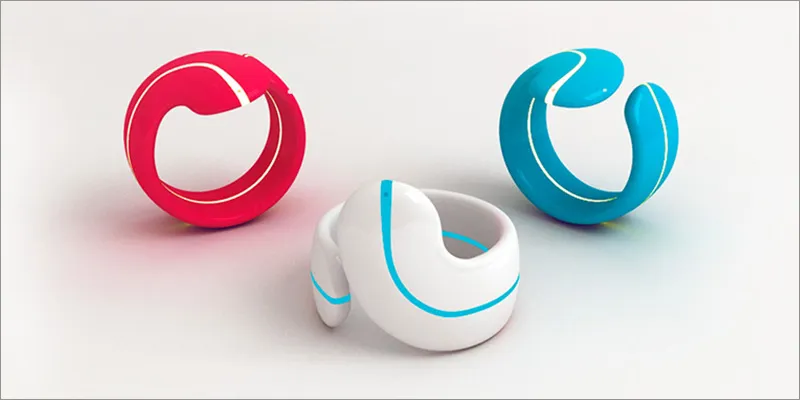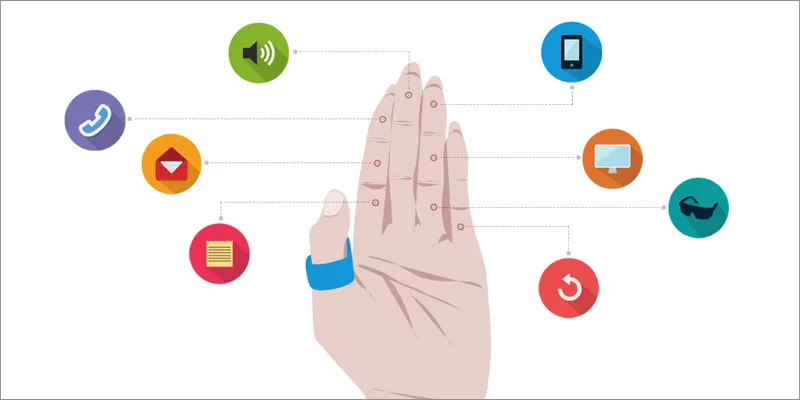FIN – the thumb-ring that aims to take human-machine interaction to the next level
Wearable technology market is still in early evolution stages with growing adoption in segments such as fitness and wellness, healthcare and medical, industrial and military and infotainment sectors. According to industry reports, the global wearable technology market is expected to reach USD 5.8 billion in 2018.
There are multiple factors that have contributed to this rise & evolution of the wearable market. The recent technology advancements - comprising of an integration of compactness, portability, usability, data, analytics & other multi functionalities in one product - has led to a booming industry. A change in consumer paradigm has also contributed to the rise of this industry. The innovation and product mindset is rapidly evolving in India and Indian entrepreneurs are waking up to this. Indian entrepreneurs are optimistic about this opportunity & are aiming create products of global relevance.

Alexei Levene, member of the RHL vision technologies and a strong believer in this industry’s potential, says, “we are at the edge of what is possible to think in terms of technological evolution.”The thumb-ring, that the team led by Rohil N, has created can be connected to innumerable devices via Bluetooth and allows the user to control them by simply moving the ringed finger on the palm. According to the team, FIN will be the upcoming medium between humans and machines, whose relation “will break down in the next future” and give rise to a more natural and direct interaction.
Rohil started to work on this idea when he was in college. “We started looking at the possibility to communicate with computers through gestures and developed test software,” he recalls. After graduating, Rohil continued researching on possible interactions between humans and the machine interface.
The 7 member team in Kerala have collaborators around the world, have raised 203% of the initial amount requested in their crowdfunding campaign, and has recently received investment from Kalaari Capital.

When Rohil first told me about his experiments, I imagined a guy in front of a laptop moving his hands in the air trying to communicate with it,without touching it, to play We Are The Champions in a surge of excitement for human-machine communion. Let aside the tech ignorance this picture shows, the idea of interacting with a device through a ring is indeed slightly not thought of. But apparently, this is how revolutionary inventions happen.
Rohil explains, “I first focused on the movements of the arm, but these are fine if you want to interact with a big screen or machine. If you want to communicate with a normal PC, you need more practical gestures. Every muscle and bone in our body is there for a reason. They stretch and contract, twist and connect. The movements we can do are so many that we can continuously find new ones we can perform. So, why not bring this exceptional ability to the next level? Why not use our movements to control not only our body, but also things around us?”
The team stresses that, “FIN is not a wearable device.” Alexei argues, “people who make wearable devices make products for their market. We are looking 20 years into the future.” FIN resulted from the observation that the thumb is the only finger that can move everywhere on the palm, and a constant focus on connecting natural gestures with remote machine control has driven its development. “FIN is not simply a device that you wear,” continues Alexei, “it is the connection between what is possible and what is still not possible.”

The Kerala based team is preparing to launch their product in May-June. They have attracted interested in many countries in the world, especially in USA, Europe, and Asia.
In India, the number of techies and tech lovers is large, they are curious &constantly hungry for new products. They will be the first ones who will enable and demonstrate the applicability of FIN to the Indian context.
The team has developed their product trying not to focus on specific use cases because they want FIN to be as versatile as possible. “Today people don’t think it’s even possible to build this kind of products and it is hard to predict how they are going to react to it,” says Alexei. But he adds that the broad applicability of FIN will involve a wave of startups that will use the product as a platform for creating other services.
Find more about the ring here.







